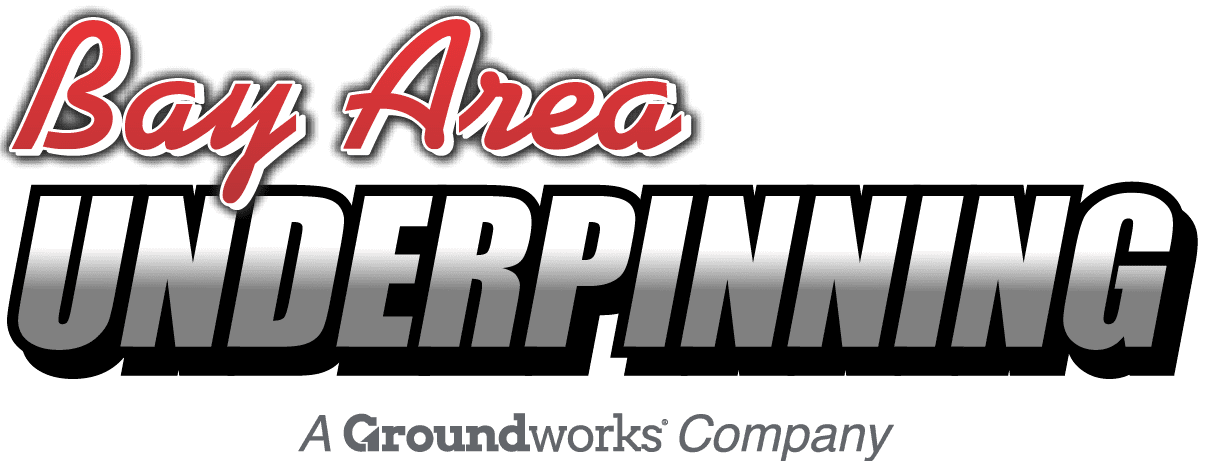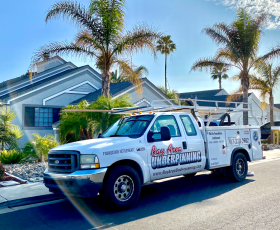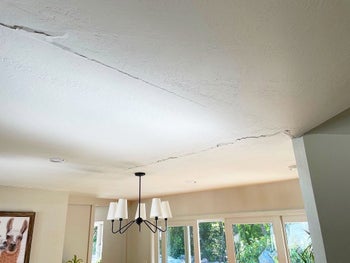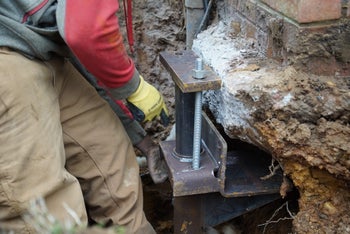Buying An Underpinned House – What You Need To Know
Table of Contents
1. What Is Foundation Underpinning?
2. How Is A House Underpinned?
3. Why Would A House Need To Be Underpinned?
4. What Causes Differential Settlement?
5. Is It Ok To Buy An Underpinned House?
6. When To Walk Away From Buying An Underpinned House
7. Signs A House Might Need To Be Underpinned
Wondering if you should buy an underpinned house? If so, stick around because that’s what we’re going to talk about in this article. We’re going to go over what foundation underpinning is, how a house is underpinned, why a home might need to be underpinned, and more.
What Is Foundation Underpinning?
Foundation underpinning is a repair method used to lift, stabilize, and level foundations. The underpinning process ultimately stabilizes the foundation by using soil that’s able to support it. After a house has been underpinned, the building’s load or area that has been piered is transferred to strong load-bearing soil.
The two most commonly used underpinning methods are push piers and helical piers. For foundations on hillsides, drilled concrete piers are often used. All depends on a number of factors that will determine the best foundation repair option.
How Is A House Underpinned?
The most common underpinning methods are resistance push piers, helical piers, drilled concrete piers, and slab piers. A home’s foundation can be underpinned from the exterior or the interior. However, each foundation repair plan is different based on if the home’s foundation is a crawl space or slab on grade.
Resistance Push Piers
Resistance push piers are the most common underpinning method. The galvanized steel piers are hydraulically driven down into load-bearing soil using the building’s weight and hydraulic pressure. Once all the piers are driven with steel pipe and have reached load bearing soil a synchronized hydraulic lift is performed and if necessary will lift the foundation back to level condition and stabilize the foundation from any future settlement.
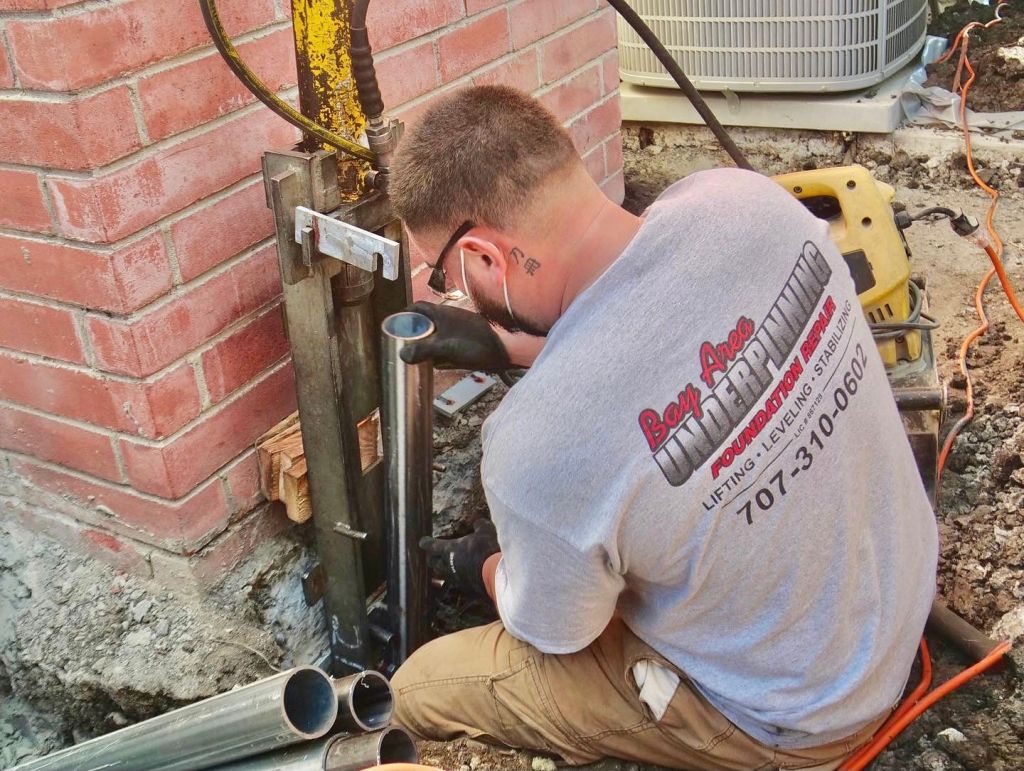
Helical Piers
Helical piers are another repair option that can stabilize a home’s foundation. Oftentimes they look something like giant metal corkscrews. They’re turned into the ground to the torque and depth specified by a structural engineer. Once they’re in place, the building is raised by a synchronized hydraulic lifting system much like the resistance push piers.
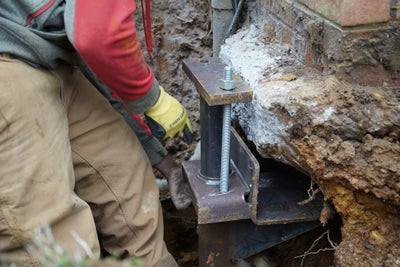
Drilled Concrete Piers
Homes built on hillsides can experience lateral foundation movement caused by something called ‘’ downhill creep. ” This is when the soil at the top of the hill gradually slides down the hill and ends up at the bottom. Drilled concrete piers are a common repair solution that will stop lateral movement and stabilize the foundation.
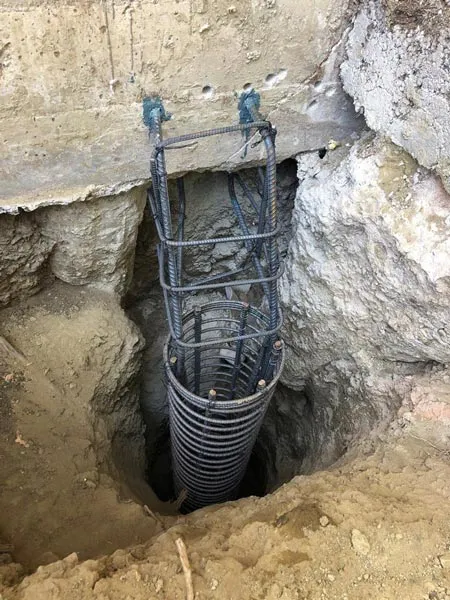
Slab Piers
Slab piers are similar to a resistance pier; however they are often installed inside of the home. Depending on the repair plans, slab piers are needed to support a lift and stabilize the home’s foundation if it is slab on grade. Starting with core drilling an area only big enough for the slab pier to be installed.
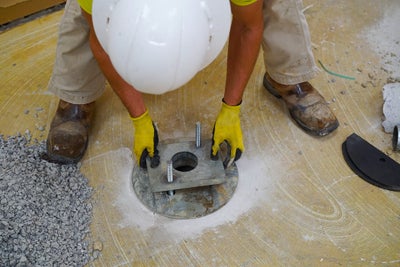
Why Would A House Need To Be Underpinned?
A house needs to be underpinned when the foundation can no longer adequately support the structure or an area of the home. This is usually a problem related not to the structure itself but to the soil it’s sitting on.
For some reason, the soil cannot support the home, could be clay soil or perhaps sandy soils that your home was originally built on. This has caused something called ‘’differential settlement’’.
What Is Differential Foundation Settlement?
Differential foundation settlement is when a foundation settles into the soil unevenly. This puts tremendous stress on the foundation and will lead to structural damage.
What Causes Differential Settlement?
Differential settlement is caused by various things, including:
- Expansive soil – Expansive soil contains a lot of clay, and because of this, it expands when it soaks up moisture and shrinks when it releases water and dries out. This creates movement in the soil under the foundation and can eventually lead to differential settlement.
- Improper Drainage – Having drainage around your home is crucial. If downspouts don’t drain like they should it can lead water to soak into the soil around the foundation.
- Soil that wasn’t correctly compacted before construction started – Before any construction project begins, the soil needs to be adequately tamped down. If this isn’t done, the structure will settle into the ground unevenly after it’s built.
- Erosion-prone soil – Soil prone to erosion can lead to the formation of voids under the foundation. If the foundation sinks into the voids, there will be differential settlement.
- Large trees ‘drinking’ water from the soil – Some trees have extensive root systems that can invade the ground under the foundation and ‘’drink’’ water from the soil leaving behind voids.
- Natural disasters – Earthquakes, floods, sinkholes, etc., can all cause differential settlement.
- Excavation next door – If your neighbor digs a huge hole too close to your home, it could destabilize the foundation and lead to differential settlement.
- Poor construction – Unfortunately, it happens.
Is It Ok To Buy An Underpinned House?
Sometimes it is, sure. Other times, you might want to pass. Here’s what you need to know:
Just because a house has been underpinned doesn’t mean it was poorly constructed. Foundation trouble is pretty common, and it happens all the time to homes that were built correctly.
If the underpinning was done correctly, the house shouldn’t need another repair for the same problem. The underpinning should last for the lifetime of the house because the foundation is now firmly connected to load-bearing soil. However, you might want to ask the current owner why the house needed to be underpinned.
If you’re thinking about buying an underpinned house, here are some things to consider:
- Is the warranty for the repair transferable?
- Is there a fee to transfer the warranty?
- Is the company that did the underpinning still in business? (A warranty is only as good as the company offering it.)
Never buy an underpinned house – or any house, for that matter – without first getting either a foundation repair contractor or a structural engineer to inspect it first.
For more information, see Buying A House With Foundation Issues: Read This Before You Sign.
When To Walk Away From Buying An Underpinned House
Here’s when you need to walk away from buying an underpinned house:
- The warranty for the repair has expired.
- The warranty can’t be transferred to the new owner.
- The company that underpinned the house is no longer in business.
- A professional foundation contractor or structural engineer says the foundation still has a problem.
Signs A House Might Need To Be Underpinned
Your house might need to be underpinned if there are signs of differential settlement. These include:
- Uneven floors
- Windows and doors that don’t open and close properly
- Ceilings and floors that have separated from the wall
- Torn or wrinkled wallpaper (The wall behind the wallpaper might be cracked.)
- Wall cracks
- Ceiling cracks
- Cracked floors
- Moldings that aren’t attached to the ceiling or floor
- Stair step cracks in brick or masonry
- Chimneys and porches that are pulling away from the house
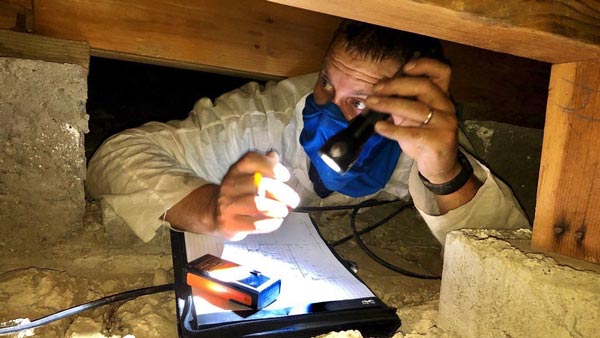
If you see any of the above or anything else that seems suspicious, contact us today to schedule a foundation evaluation. We serve Northern California. For more information, see our Service Area page.
More Resources
Publish Date:
Last Modified Date:
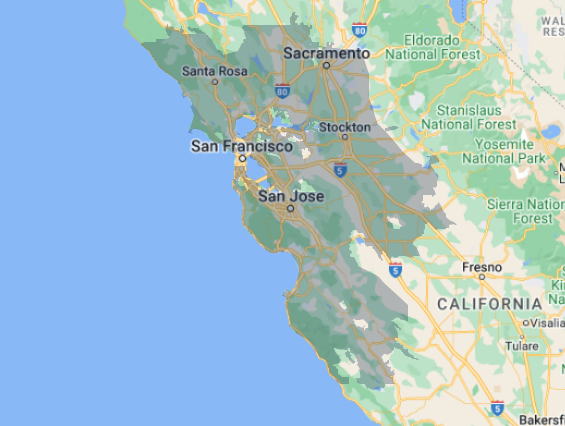
Our Locations
2333 Courage Dr. Suite C
Fairfield, CA 94533
1161 N Fair Oaks Ave
Sunnyvale, CA 94089
